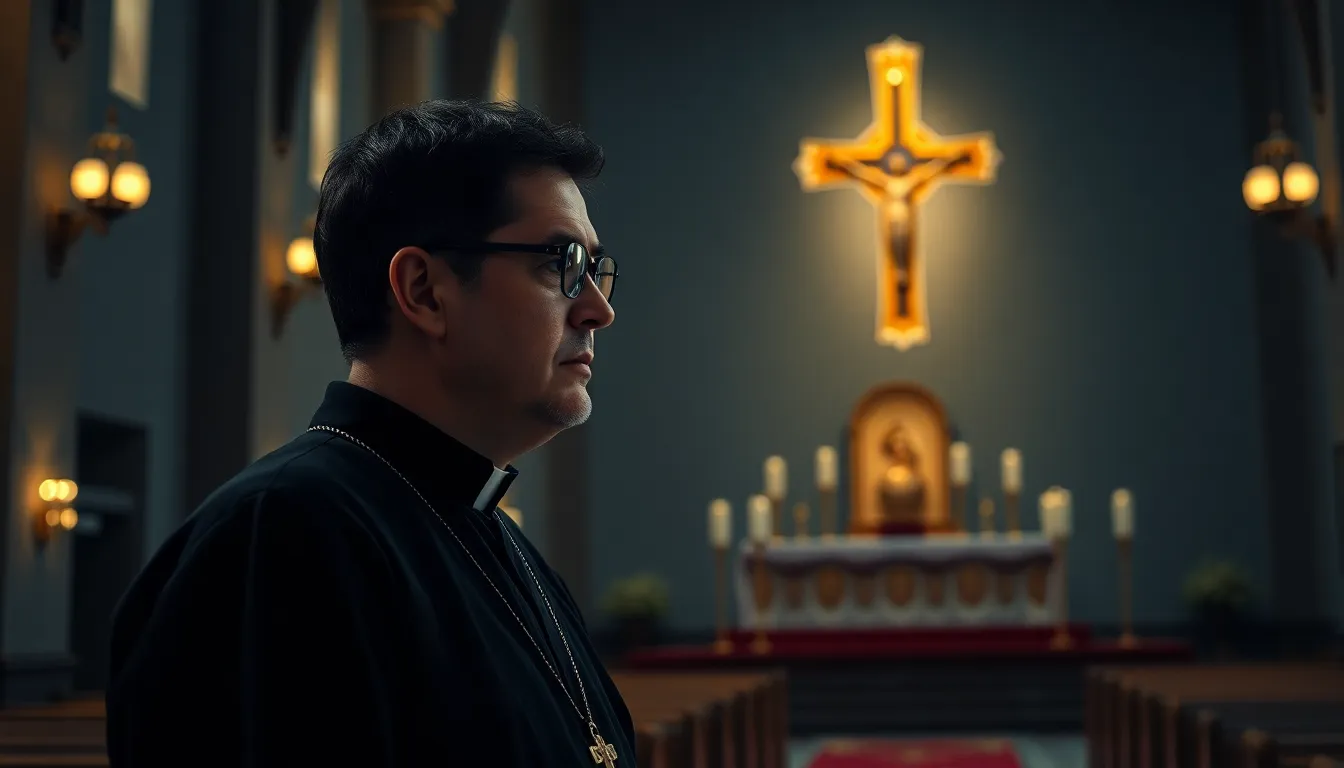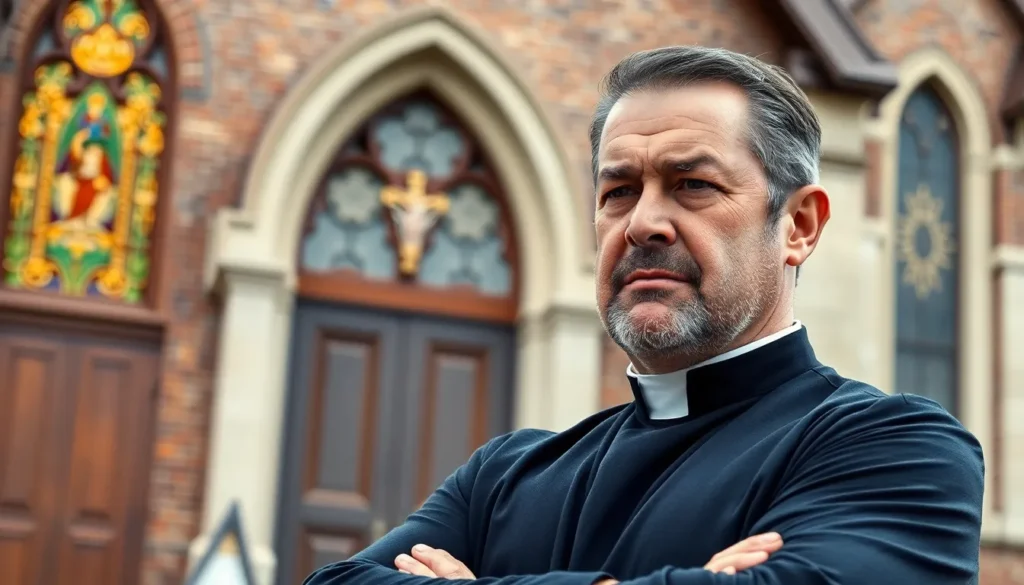In a world where scandals seem to pop up like daisies, the excommunication of Father Adam Kotas has certainly turned heads. Imagine a priest navigating the choppy waters of faith and controversy, only to find himself on the wrong side of church authority. This story isn’t just about a man losing his collar; it’s a tale filled with intrigue, drama, and a sprinkle of irony that’ll keep you hooked.
Table of Contents
ToggleBackground of Padre Adam Kotas
Padre Adam Kotas gained attention for his controversial views within the Catholic Church. Born in Poland, he became a priest later serving in multiple parishes in the United States. His teachings often sparked debates, particularly regarding traditional church doctrines and interpretations of scripture.
In recent years, Kotas adopted a more radical stance on specific dogmas, leading to tensions with church authorities. Significant disagreements emerged over his interpretation of the role of the clergy and the nature of faith. These tensions culminated when church leaders began to scrutinize his practices, focusing on his unconventional approaches to pastoral care.
Kotas, in response, maintained that his intention was to foster a deeper connection among parishioners. He emphasized the importance of addressing contemporary issues faced by believers. However, church officials viewed his methods as divisive, undermining the unified doctrine of the church.
The excommunication process was initiated after a series of warnings and discussions aimed at reconciliation. Authorities cited a lack of adherence to established teachings as the primary reason for his excommunication. On multiple occasions, Kotas publicly defended his actions, arguing for the need to evolve with the times.
Overall, the situation surrounding Padre Adam Kotas illustrates the complexities of faith, authority, and personal conviction in the modern church landscape. His narrative continues to resonate with many, highlighting the ongoing struggle between traditionalism and progressive thought within religious communities.
Reasons for Excommunication

Father Adam Kotas faced excommunication due to several notable factors that raised concerns among church authorities.
Theological Disputes
Theological differences played a significant role in his excommunication. Kotas adopted radical interpretations of traditional church doctrines, which conflicted with established teachings. He argued for a re-evaluation of the clergy’s role, emphasizing a more modern approach to faith. This perspective sparked intense debates among parishioners and clergy alike. Some viewed his teachings as necessary for addressing contemporary issues within the church. Others considered them divisive and contrary to core doctrines, leading to heightened tensions with ecclesiastical leadership.
Allegations Against Padre Kotas
Numerous allegations contributed to the decision for excommunication. Church officials cited Kotas’s frequent public dissent against church authority as particularly concerning. Reports indicated he downplayed traditional sacraments, questioning their relevance in modern practice. Additionally, Kotas appeared to promote ideologies that strayed from accepted beliefs, prompting complaints from congregants. Despite his assertions that his actions aimed to deepen faith, many perceived them as undermining the church’s foundational tenets. These allegations ultimately fueled the church’s resolve to pursue excommunication.
Impact of Excommunication
Excommunication of Father Adam Kotas stirred significant responses within his community and the wider church.
Community Reactions
Many parishioners expressed shock and dismay over the excommunication. Others voiced support for Kotas, believing his radical views resonated with their struggles in modern society. Debates erupted, with some congregants advocating for traditional church teachings while others embraced Kotas’s progressive interpretations. Community meetings generated heated discussions, reflecting the divided sentiments about Kotas’s role in addressing key issues. Some attendees noted the need for the church to adapt, emphasizing that Kotas’s ideas sparked vital conversations about faith in contemporary life. Conversely, others feared his exclusion could further alienate parishioners who held similar views. Responses varied widely, showcasing the complex relationship between faith and individual beliefs within the community.
Consequences for the Church
Excommunication posed various challenges for church leadership. It highlighted existing rifts between traditionalists and progressives. Many leaders faced increased scrutiny over their decisions, with some fearing backlash from members who supported Kotas. Attendance at services shifted as individuals reconsidered their loyalty. Additionally, clergy noted potential declines in financial contributions from disenchanted parishioners. Church officials had to navigate complex theological debates while striving to maintain unity within the congregation. The controversy brought attention to the necessity of clear communication regarding doctrinal interpretations. In many ways, Kotas’s excommunication underscored the ongoing struggle for relevance in a rapidly changing religious landscape.
Personal Reflection and Response
Responses to Father Adam Kotas’s excommunication reveal a spectrum of emotions within his community. Many parishioners feel shocked by the decision, viewing it as a betrayal of the progressive ideals he embodied. Conversely, some supporters argue his radical teachings provide necessary guidance in navigating modern challenges. Tensions arise between those who align with Kotas’s perspective and those who advocate for adherence to traditional doctrines.
Debates within the congregation intensify as individuals reassess their beliefs. Observers note that discussions focus on whether the church must adapt to contemporary societal issues or maintain its foundational teachings. Each side presents compelling arguments, illustrating the complexity of the situation. As voices clash, clergy find it challenging to mediate between differing viewpoints.
Financial implications emerge as attendance fluctuates. Those disillusioned by the decision express concerns over continued support for the church. Shifts in participation could hinder the church’s overall stability and growth. Leaders within the church face increased pressure to respond adeptly to these developments.
Community dynamics transform in light of Kotas’s situation. Members who once felt unified now experience division, leading to questions about faith and loyalty. Conversations often highlight personal connections and the evolving nature of belief systems. Understanding these transformations is critical as the church navigates its future amidst changing expectations. Each individual’s experience contributes to a broader narrative about faith’s role in contemporary life.
Father Adam Kotas’s excommunication has sparked significant debate within his community and the broader church. His radical interpretations and challenges to traditional doctrines have drawn both support and criticism. As parishioners grapple with their loyalty amidst this controversy, the church faces a pivotal moment.
The ongoing discussions about faith and modernity highlight a crucial tension between adapting to contemporary issues and maintaining core beliefs. Kotas’s situation serves as a reflection of the evolving nature of religious practice and the complexities of individual belief systems. The impact of this excommunication will likely resonate for years, shaping the future dynamics of the congregation and the church’s approach to modern challenges.

